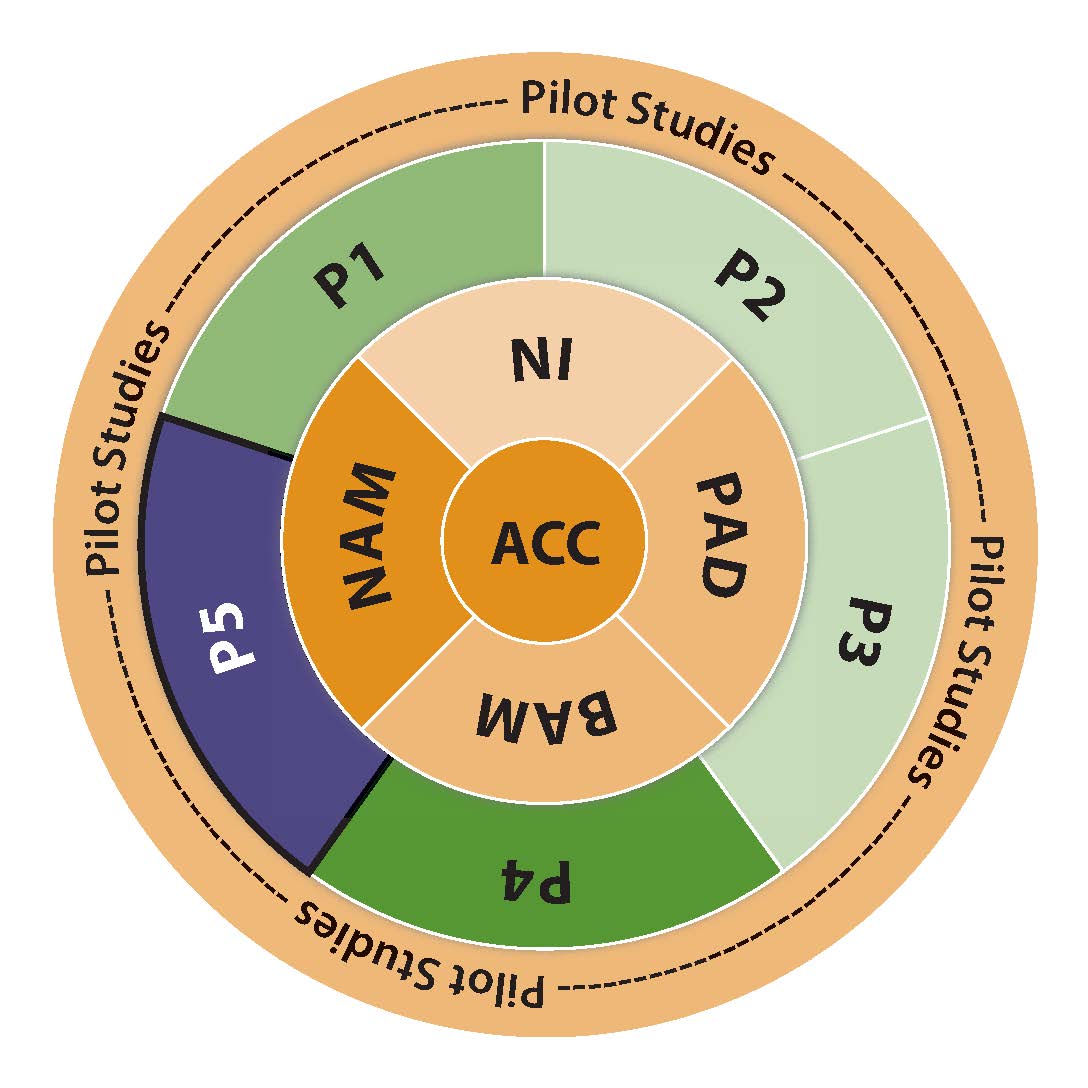PROJECT 5 (P5)
HIV and METH-associated Alterations of Behavior and Neural Networks
Project Director: Marcus Kaul, Ph.D. (Sanford-Burnham-Prebys Medical Discovery Institute)Summary:
Both HIV-1 and METH can cause behavioral changes and brain injury, but their interaction is poorly understood. In the previous funding period, we observed that a one-time METH binge caused a reduction in hippocampal post-tetanic potentiation (PTP) in HIV/gp120 transgenic (tg) mice, but in not control mice. Ribonucleic acid (RNA) expression studies indicated that both HIV/gp120 and METH trigger significant changes of glutamatergic and GABAergic neurotransmission. In vitro studies showed that METH at 100 µM increased neurotoxicity of HIV/gp120 and excitotoxic N-methyl-D-aspartate (NMDA). METH also increased HIV infection of human macrophages in association with down-regulation of at least four interferon-inducible genes. Therefore, the overall hypothesis is that use of METH aggravates behavioral disturbances and neurotoxicity associated with HIV-1 infection. Our Specific Aims are to:
- Identify affected neural networks by studying gene expression associated with long-term effects of METH in HIV/gp120tg, inducible (i)Tat-tg, and non-tg control mice, and to relate such gene expression changes to behavioral performance
- Determine whether METH interferes with the efficacy of combined antiretroviral treatment (cART) drugs to reduce viral replication and production of neurotoxic products by infected monocytes/macrophages.
For Aim 1, gp120tg, iTat-tg, and non-tg control mice are being treated with a novel, chronic, low dose 12-week METH regimen. Following a 5-month abstinence period and behavioral testing, neuronal and glial injury and gene expression will be analyzed in brain tissue using deconvolution microscopy, microarray, and quantitative real-time polymerase chain reaction (qRT-PCR). Gene expression data will be analyzed separately for cortex, hippocampus, striatum, and other brain regions, and correlated with behavioral outcomes and neuropathology. Follow-up studies to gene expression analyses will probe protein expression, localization, and function using biochemical and microscopy approaches. For Specific Aim 2, macrophages infected with HIV are being treated with ARV combinations and varying METH concentrations. The neurotoxicity of supernatents from such macrophage experiments are tested on microglia-depleted mixed neuronal glial cerebrocortical cells of rats. The long-term objective is to identify neurotoxic mechanisms that are potential targets for therapeutic intervention.
Relevance:
Infection with HIV-1 is often associated with exposure to addictive drugs, such as METH, and both are major public health concerns. Our studies will improve the understanding of mechanism contributing to brain injury and behavioral alterations caused by the combination of METH exposure and HIV infection and thus will help to develop new treatment strategies.
